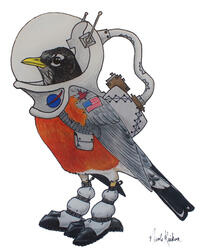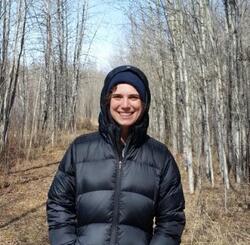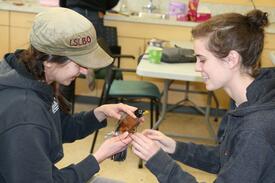
Ruth’s research involves developing innovative computational methods to analyze large data sets to determine how global biodiversity responds to environmental change.

As a doctoral student at Columbia University and Lamont-Doherty Earth Observatory, Ruth developed novel machine learning methods to quantify songbird vocal activity and estimate when birds arrive at their Arctic breeding grounds based on over a thousand hours of acoustic recordings. Her results, published in Science Advances, demonstrate the potential for automated biodiversity sensors to contribute to ecological research by efficiently extracting information from large and highly complex data streams. She also leveraged cutting-edge GPS tracking devices to investigate how behavioral responses to environmental conditions contribute to long term shifts in migration timing of North America’s most recognizable songbird, the American. This work, published in Environmental Research Letters and reported in Newsweek, overcame previous technological challenges and represents a breakthrough in using individuals’ behavior to explain shifts in avian migration timing. Her work also engaged elementary school students via a field blog hosted by NASA’s Earth Observatory in which students adopted migrating robins, providing monikers such as Birdie Sanders.
A key component of Ruth’s research program is developing novel methods and workflows to translate the wealth of ecological data being generated today into actionable knowledge. She’s excited by the new insights that can be gained by linking novel and emerging biodiversity data types.
 As a Postdoctoral Associate at BGC, her work takes a global perspective on biodiversity by developing quantitative indicators to assess progress toward targets developed by the Convention on Biological Diversity. She developed metrics to assess trends in the coverage and sampling effectiveness of spatiotemporal biodiversity data within a flexible framework, which can quickly integrate information on tens of thousands of species. This enables a detailed understanding of how best to improve our collective knowledge and safeguard biodiversity for future generations.
As a Postdoctoral Associate at BGC, her work takes a global perspective on biodiversity by developing quantitative indicators to assess progress toward targets developed by the Convention on Biological Diversity. She developed metrics to assess trends in the coverage and sampling effectiveness of spatiotemporal biodiversity data within a flexible framework, which can quickly integrate information on tens of thousands of species. This enables a detailed understanding of how best to improve our collective knowledge and safeguard biodiversity for future generations.
